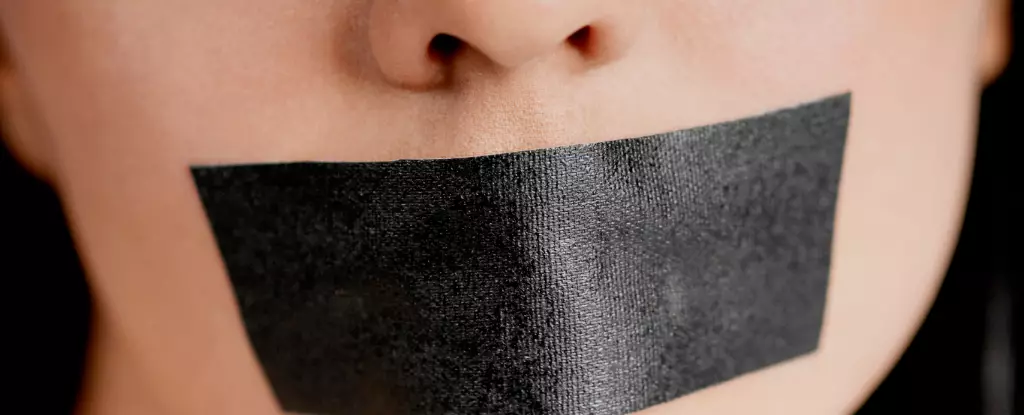Sleep apnea is often overshadowed by more recognizable cardiovascular risks, such as poor diet and lack of exercise. However, as awareness grows, it’s becoming apparent that sleep apnea—characterized by temporary breathing stops during sleep—is a significant contributor to heart disease and strokes. While the problems related to unhealthy eating and sedentary lifestyles have clear, researched solutions, managing sleep apnea has proven much more complicated. In this exploration, we will delve into some of the more prevalent treatment options available, including the controversial method of mouth taping, to understand their implications.
The traditional treatment for sleep apnea primarily includes continuous positive airway pressure (CPAP) machines and mandibular advancement devices (MADs). CPAP therapy has been the gold standard for over four decades, employing a mask that pumps pressurized air, thereby keeping the airway open during sleep. While effective, CPAP adherence rates can be frustratingly low, with studies indicating that approximately half of users abandon the device within three years of starting therapy. The bulky nature of the device and the discomfort associated with prolonged use often lead to non-compliance.
On the other hand, MADs work differently by repositioning the jaw to maintain an open airway. Though these mouth guards can significantly alleviate symptoms like daytime fatigue, many users report discomfort in the initial weeks, which could manifest as jaw pain, excessive drooling, or even gingival irritation. Furthermore, these devices may not be suitable for everyone, particularly for people with severe sleep apnea or anatomical restrictions.
In light of the challenges posed by CPAP and MADs, alternative solutions like mouth taping have emerged on the wellness scene. This method involves sealing the mouth with tape, intentionally encouraging nasal breathing to potentially minimize the risk of airway obstructions. Advocates suggest using breathable medical tape for this procedure, applied in a manner that does not completely close the mouth. However, while this method sounds straightforward, research presents a more complicated picture.
A study mimicking mouth taping raised concerns, revealing that while some subjects exhibited improved airflow, others faced decreased airflow, suggesting that this method does not suit everyone. This inconsistency raises a red flag for those seeking a universal remedy to their sleep issues. Furthermore, preliminary research typically included only small groups and focused on individuals with mild or moderate conditions, making the results less applicable to a broader population.
Beyond ineffectiveness, mouth taping carries several potential risks that may outweigh its benefits. One notable issue is the phenomenon of “mouth puffing,” where individuals circumvent tape by exhaling through the sides of their mouths. This could lead to insufficient oxygen levels in the bloodstream, increasing carbon dioxide levels and pushing the body into a state of stress. The failure to provide proper airflow could exacerbate existing issues for those already suffering from sleep apnea.
Skin irritation is another concerning side effect of mouth taping. The area surrounding the mouth is notoriously sensitive and rich in nerve fibers, making it susceptible to discomfort and even injury. Prolonged use of tape could lead to skin conditions such as dermatitis and folliculitis, making the act of sleeping an arduous and painful experience for some.
The implications of mouth taping extend beyond immediate discomfort or irritation. For individuals with respiratory conditions or infections, obstructing the mouth’s natural airflow could risk severe consequences such as aspiration. Imagine a situation where a person who has indulged in alcoholic beverages or experiences gastrointestinal distress tapes their mouth shut during sleep. If vomiting occurs, the risk of aspirating this material into the lungs becomes alarmingly high, leading to serious health concerns, including aspiration pneumonia.
While the search for effective sleep apnea treatments is essential, mouth taping emerges as a method fraught with challenges and dangers. Conventional treatments like CPAP and MADs, though not perfect, are backed by extensive research and are recognized and advised by medical professionals. In contrast, the appeal of quick-fix solutions like mouth taping only serves to underscore the importance of caution and medical guidance when exploring new interventions for health issues as serious as sleep apnea. Emphasizing safety should always remain paramount when considering any therapy aimed at improving sleep quality and overall health.


Leave a Reply